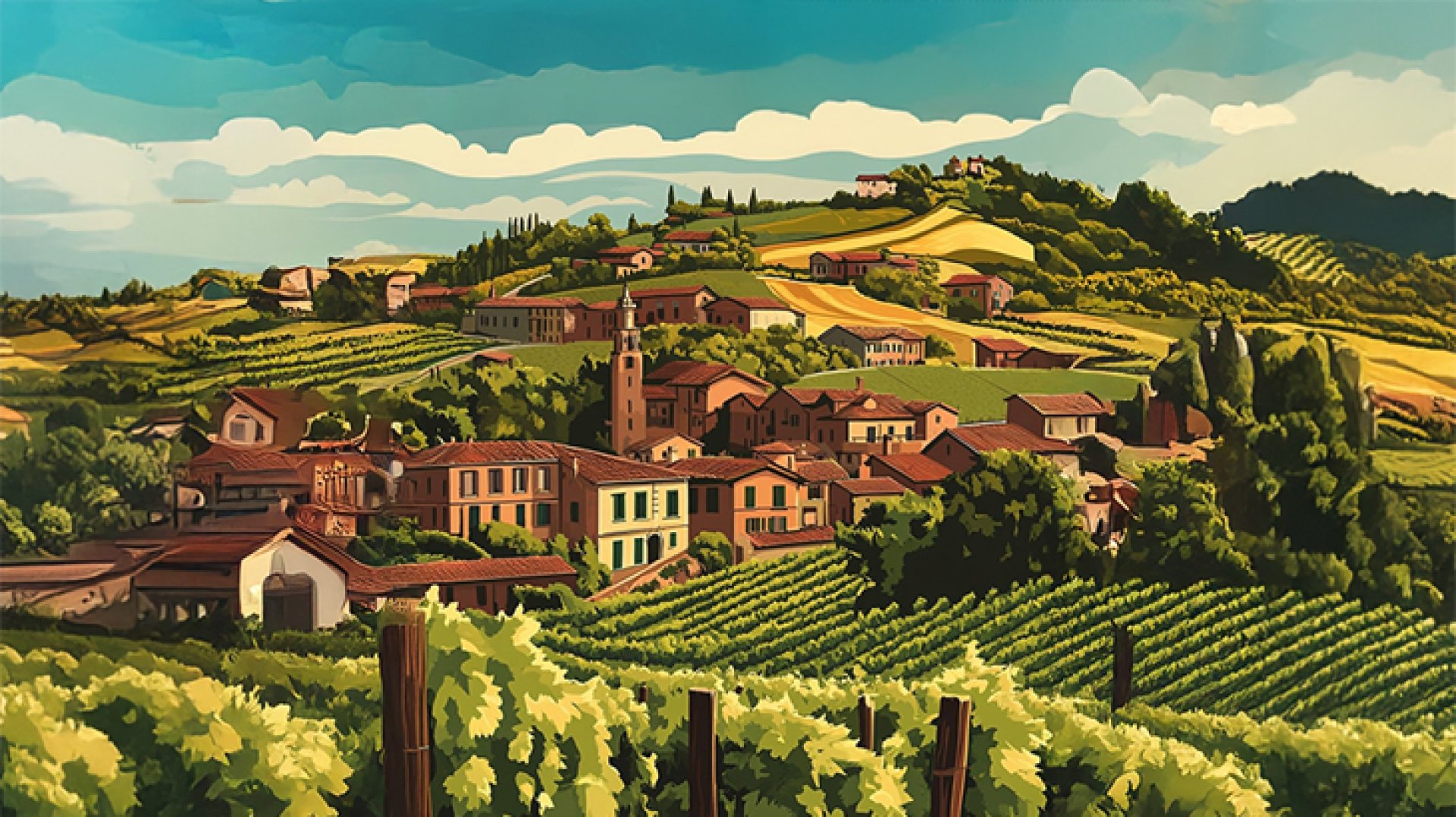Barolo and Barbaresco

Tracing the History of Barolo and Barbaresco : The Finest Wines of the Piedmont Region, Italy
In the world of Italian wine, Barolo and Barbaresco are regarded as the King and Queen of Wines due to their status as premium wines, widely considered among the finest in the world. Both are made from 100% Nebbiolo grapes, cultivated in the Piedmont region of northwestern Italy.
The story of Barolo and Barbaresco begins in Piedmont, where historical evidence suggests that Nebbiolo grapes have been grown since the 13th century (12011300). However, the Barolo and Barbaresco wines we recognize today were developed in the 19th century (18011900).
The History of Barolo
In the 1850s, Barolo wine was first developed. Originally, it resembled Ruby Port, as it was sweet and had a strong fruity aroma.
It wasnt until Marchesa Giulia Colbert Falletti, later known as Giulia Falletti di Barolo, a noblewoman, sent Barolo wine to King Carlo Alberto of Savoy to taste. The king enjoyed it so much that he declared Barolo the official royal wine.
Following this, the Savoy dynasty, which resided in Turinthe first capital of Italybegan supporting its production. Over time, Barolo was refined into a full-bodied red wine with a rich, complex, and dry character, earning it the title King of Wines and the Wine of Kings.
According to Italian wine regulations, Barolo must be produced exclusively in 11 designated villages within the growing region and made from 100% Nebbiolo grapes grown in the sunniest, south-facing areas. The most renowned villages include La Morra, Serralunga dAlba, Castiglione Falletto, Monforte dAlba, Roddi, Verduno, Cherasco, Diano d'Alba, and Novello.
Furthermore, Barolo production is subject to strict regulations that vineyards must adhere to in order to receive DOCG (Denominazione di Origine Controllata e Garantita) statusthe highest certification for Italian wines, which is marked on each bottle.
The History of Barbaresco
Barbaresco was first developed in 1894 by Domizio Cavazza, director of the School of Oenology in Alba. He recognized the potential of the soil in the Barbaresco area, located just 1520 kilometers from Barolo. Unlike Barolo, Barbaresco is produced in a smaller region consisting of only three villages: Barbaresco, Neive, and Treiso. Cavazza founded the Cantina Sociale di Barbaresco winery, where he cultivated Nebbiolo grapes to produce Barbaresco wine.
Barbaresco was awarded DOC (Denominazione di Origine Controllata) status in 1966 and later upgraded to DOCG (Denominazione di Origine Controllata e Garantita) in 1980, the highest certification level for Italian wines.
Despite sharing the same region and grape variety, Barolo and Barbaresco are produced in distinct areas with different soil compositions and climates, leading to unique characteristics in each wine.
Differences Between Barolo and Barbaresco
Barolo vineyards are situated on higher slopes with cooler climates, resulting in slower grape ripening. In contrast, Barbaresco vineyards lie at lower elevations with slightly warmer conditions, allowing grapes to ripen more quickly.
The soil in Barolo varies from clay to sandy and rocky, making it drier than Barbaresco. These conditions contribute to Barolo's bold structure, higher tannins, and pronounced acidity, which require longer aging periods. However, these same factors allow Barolo to be stored and aged for decades.
On the other hand, Barbarescos soil is generally more fertile and less compact than Barolos, with a high limestone content. The regions proximity to the Tanaro River also influences the terroir. As a result, Barbaresco wines tend to be more delicate, with softer tannins, making them easier to drink at a younger age without extended aging.
Aging Requirements
Barolo must be aged for at least three years before release, with a minimum of 18 months in oak barrels. A special classification, Barolo Riserva, requires at least five years of aging before it can be sold.
- Barbaresco has a shorter aging period, requiring at least two years, including nine months in oak barrels. Similarly, Barbaresco Riserva must be aged for a minimum of four years before release.
Taste and Aroma
- Barolo is known for its bold, complex flavors with notes of dark red fruits such as cherry, blackberry, and plum, complemented by floral aromas of rose and hints of spice.
- Barbaresco, by contrast, has a softer, more elegant profile, featuring fresh red fruit flavors like strawberry, raspberry, and cherry, along with floral notes of violet and subtle spice.
Barolo can be aged for several decades, developing even greater complexity over time. While Barbaresco can also be aged, it is generally more approachable at a younger stage.
Today, both Barolo and Barbaresco remain classified under DOCG, the highest quality certification for Italian wines, ensuring their continued prestige and excellence.


